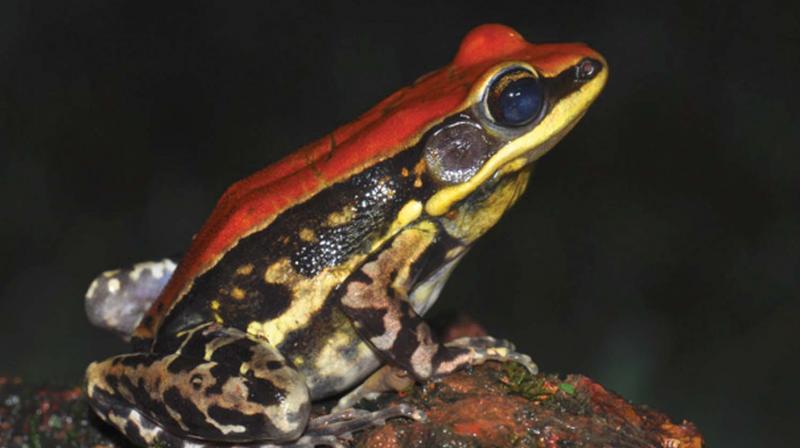Frogs that never catch flu

Thiruvananthapuram: ‘Hydrophylax Bahuvistara’ was just another frog in the Western Ghats, too widespread to be special. But 10 days ago, it catapulted to international fame when media all over the world reported that its skin secretion has an H1N1 virus-slaying peptide. This, according to Rajiv Gandhi Centre for Biotechnology scientist Sanil George, underscores the importance of conserving the forest, Western Ghats and frogs, in particular. He with Dr Joshy Jacob, associate professor, microbiology and immunology department, Emory University School of Medicine, had led the collaborative research leading to the discovery of H1N1 killer ‘urumin’.
He says there are over 225 frog species in the Western Ghats, 70 percent of which are endemic. Since peptides are species-specific, the more the number of frogs screened, the more the chance of discovering novel peptides, he says. Originally an amphibian ecologist whose initial works focused on molecular taxonomy of frogs in Western Ghats, he started studying frog skin secretions after 1987. That was the year M Zasloff, a scientist at Georgia University, “became the first person to report on an antimicrobial peptide from African clawed frog,” according to Sanil George.
His team, comprising his student Vineeth Kumar and RGCB Director Radhakrishnan Pillai, helped with initial sequencing of frog skin RNA and identification of peptides in 2011. Joshy Jacob with students David Holthausen, and Song Hee Lee started screening the peptides against viruses in 2015. They zeroed in on ‘urumin’ as it was non-toxic on human cells. The significance of the discovery, according to Dr Joshy, lies in the fact that the antiviral specifically targets H1 flu viruses. It attacks H1 hemagglutinin, a protein on the virus surface which attaches to humans to cause infection, and makes it completely fall apart. “This is the first antiviral to our knowledge which targets hemagglutinin,”says Dr Jacob. The peptide’s efficacy has been tested on mice and proven. There is a long way to go, before it gets packaged as a drug for humans. Meanwhile the scientists have more than 225 species of living peptide factories in the Western Ghats to think about.

